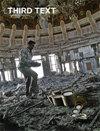The Remarkable Power of Language in The Battle of Algiers
IF 0.1
3区 艺术学
0 ART
引用次数: 0
Abstract
Abstract The bilingualism of The Battle of Algiers is one of the film’s most salient characteristics, yet it is mostly absent from the literature. The use of two languages within the film creates disjuncture in its textual fabric, disjuncture in places that do not always align with neat French/Algerian fault-lines. The alternating use of French and Algerian Arabic exists in productive tension with a unity of perspective that the film offers the viewer, revealing the difficulty of holding together and making narrative sense of the historical moment that constitutes its subject matter, the eponymous Battle of Algiers, at the time at which the film was produced, in the newly independent Algeria of the mid-1960s. The representation of the FLN’s unity and legitimacy as the sole representative of the will of the people paints over historical divisions, but the irrepressible force of the Algerian masses frequently de-centres the FLN, a fact revealed in the film’s linguistic make-up.阿尔及尔战役中语言的非凡力量
摘要《阿尔及尔之战》的双语是该片最突出的特点之一,但它在文学作品中大多缺失。电影中两种语言的使用在文本结构中造成了脱节,在不总是与整洁的法语/阿尔及利亚断层线对齐的地方造成了脱节。法语和阿尔及利亚阿拉伯语的交替使用存在于富有成效的紧张气氛中,电影为观众提供了统一的视角,揭示了在电影制作时,难以将构成其主题的历史时刻——同名的阿尔及尔战役——联系在一起并使其具有叙事意义,在20世纪60年代中期新独立的阿尔及利亚。作为人民意志的唯一代表,民族解放阵线的统一性和合法性的表现掩盖了历史分歧,但阿尔及利亚群众无法抑制的力量经常使民族解放阵线失去中心地位,这一事实在电影的语言构成中得到了揭示。
本文章由计算机程序翻译,如有差异,请以英文原文为准。
求助全文
约1分钟内获得全文
求助全文
来源期刊

Third Text
ART-
CiteScore
0.40
自引率
0.00%
发文量
39
期刊介绍:
Third Text is an international scholarly journal dedicated to providing critical perspectives on art and visual culture. The journal examines the theoretical and historical ground by which the West legitimises its position as the ultimate arbiter of what is significant within this field. Established in 1987, the journal provides a forum for the discussion and (re)appraisal of theory and practice of art, art history and criticism, and the work of artists hitherto marginalised through racial, gender, religious and cultural differences. Dealing with diversity of art practices - visual arts, sculpture, installation, performance, photography, video and film.
 求助内容:
求助内容: 应助结果提醒方式:
应助结果提醒方式:


